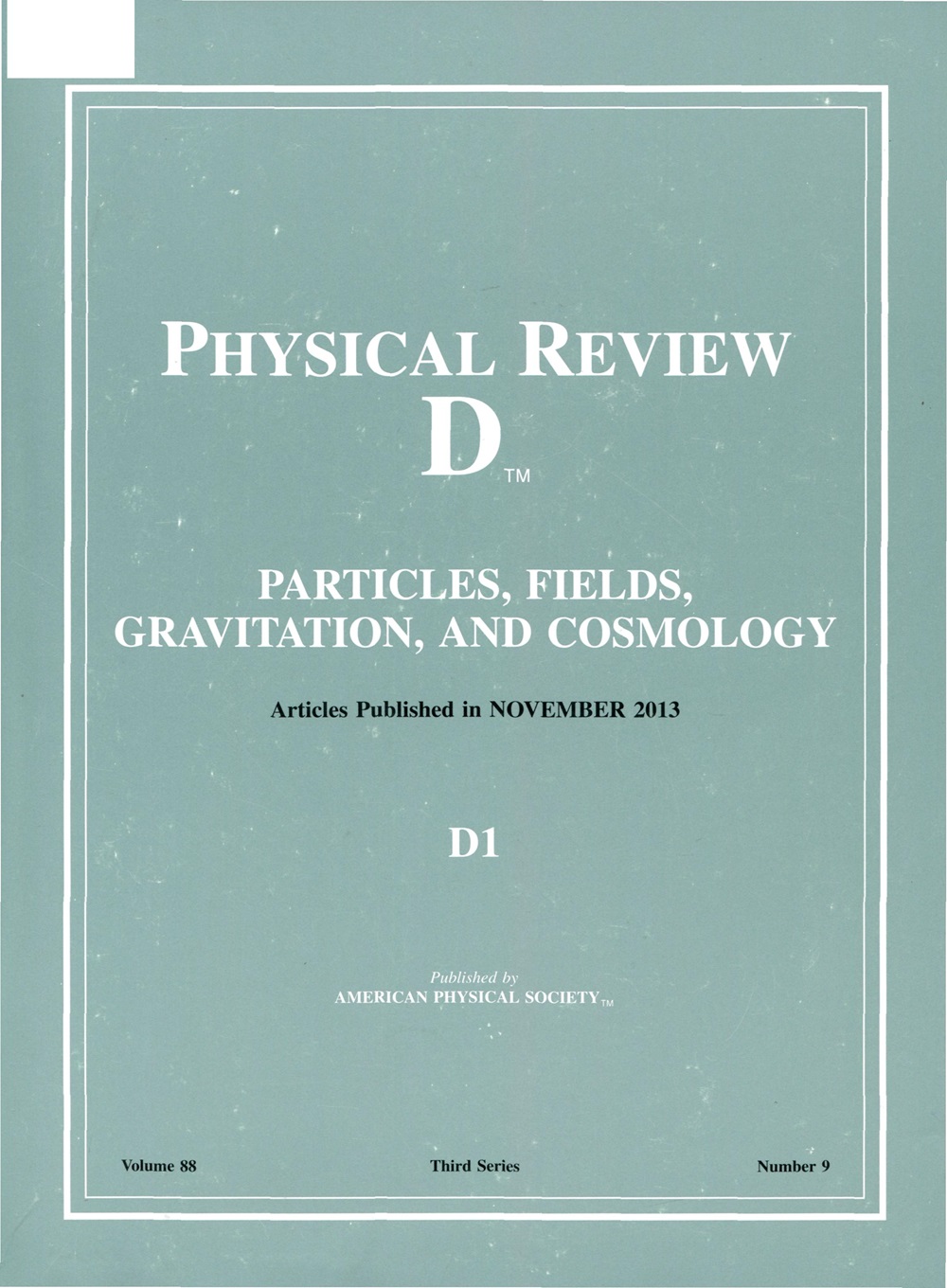Emergent hydrodynamic mode on SU(2) plaquette chains and quantum simulation
IF 5
2区 物理与天体物理
Q1 Physics and Astronomy
引用次数: 0
Abstract
We search for emergent hydrodynamic modes in real-time Hamiltonian dynamics of 2+1-dimensional SU(2) lattice gauge theory on a quasi-one-dimensional plaquette chain, by numerically computing symmetric correlation functions of energy densities on lattice sizes of about 20 with the local Hilbert space truncated atSU(2)斑块链的涌现流体力学模式及量子模拟
本文利用局部Hilbert空间截断为jmax=12,通过数值计算晶格尺寸约为20的能量密度的对称相关函数,在拟一维斑块链上的2+1维SU(2)晶格规范理论的实时哈密顿动力学中寻找突现的水动力模式。由于Umklapp过程,我们只找到了能量扩散的一种模式。当系统完全量子遍历时,对称相关器呈现出接近零频率的输运峰,其宽度与小动量下的动量平方近似成正比,如本征能级统计所示。该传输峰导致对称相关器在晚时间呈幂律t - 12衰减,也称为长尾,以及在位置空间中的扩散扩散。我们还介绍了一种在量子计算机上计算对称相关器的量子算法,并在IBM仿真器上进行了测试,发现它给出了与精确对角化一致的结果。最后讨论了寻找声模的未来前景。2025年由美国物理学会出版
本文章由计算机程序翻译,如有差异,请以英文原文为准。
求助全文
约1分钟内获得全文
求助全文
来源期刊

Physical Review D
物理-天文与天体物理
CiteScore
9.20
自引率
36.00%
发文量
0
审稿时长
2 months
期刊介绍:
Physical Review D (PRD) is a leading journal in elementary particle physics, field theory, gravitation, and cosmology and is one of the top-cited journals in high-energy physics.
PRD covers experimental and theoretical results in all aspects of particle physics, field theory, gravitation and cosmology, including:
Particle physics experiments,
Electroweak interactions,
Strong interactions,
Lattice field theories, lattice QCD,
Beyond the standard model physics,
Phenomenological aspects of field theory, general methods,
Gravity, cosmology, cosmic rays,
Astrophysics and astroparticle physics,
General relativity,
Formal aspects of field theory, field theory in curved space,
String theory, quantum gravity, gauge/gravity duality.
 求助内容:
求助内容: 应助结果提醒方式:
应助结果提醒方式:


